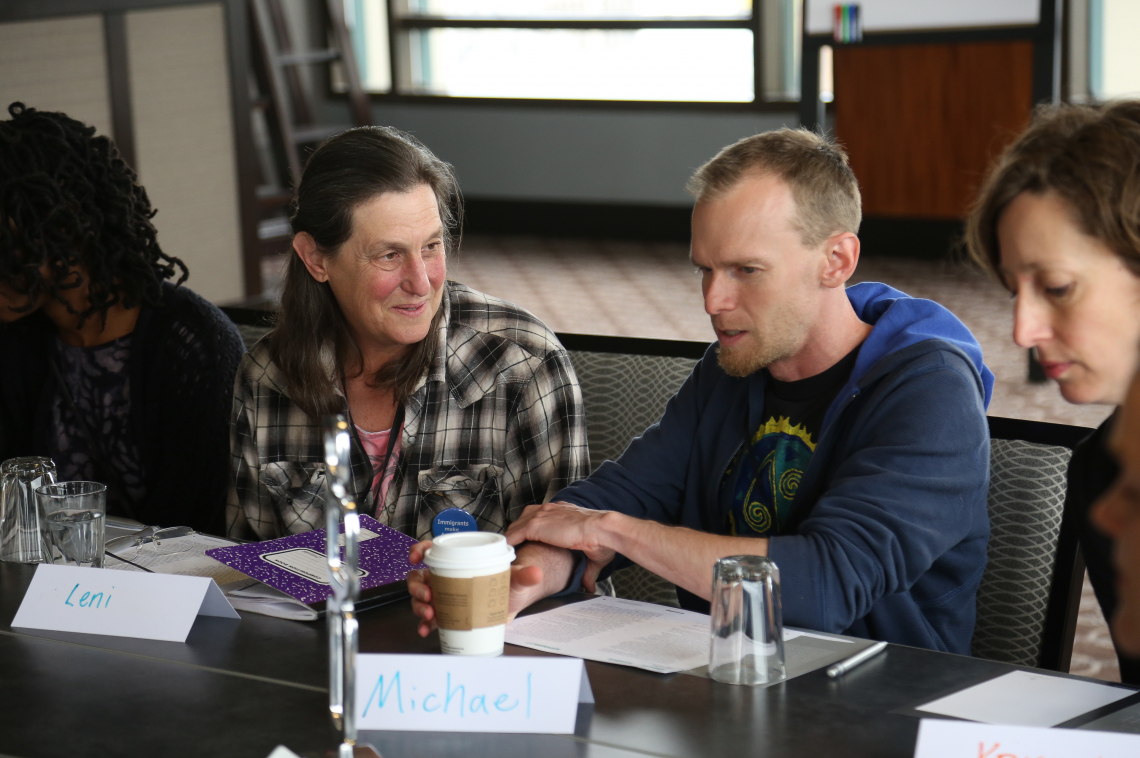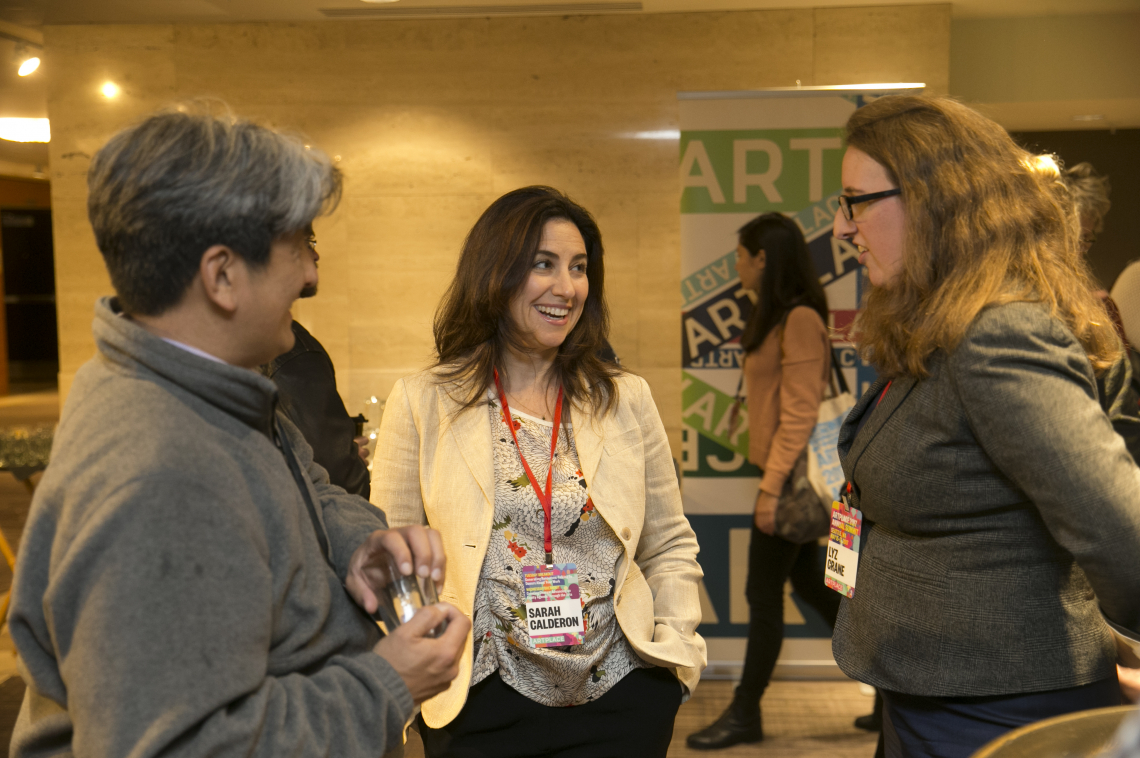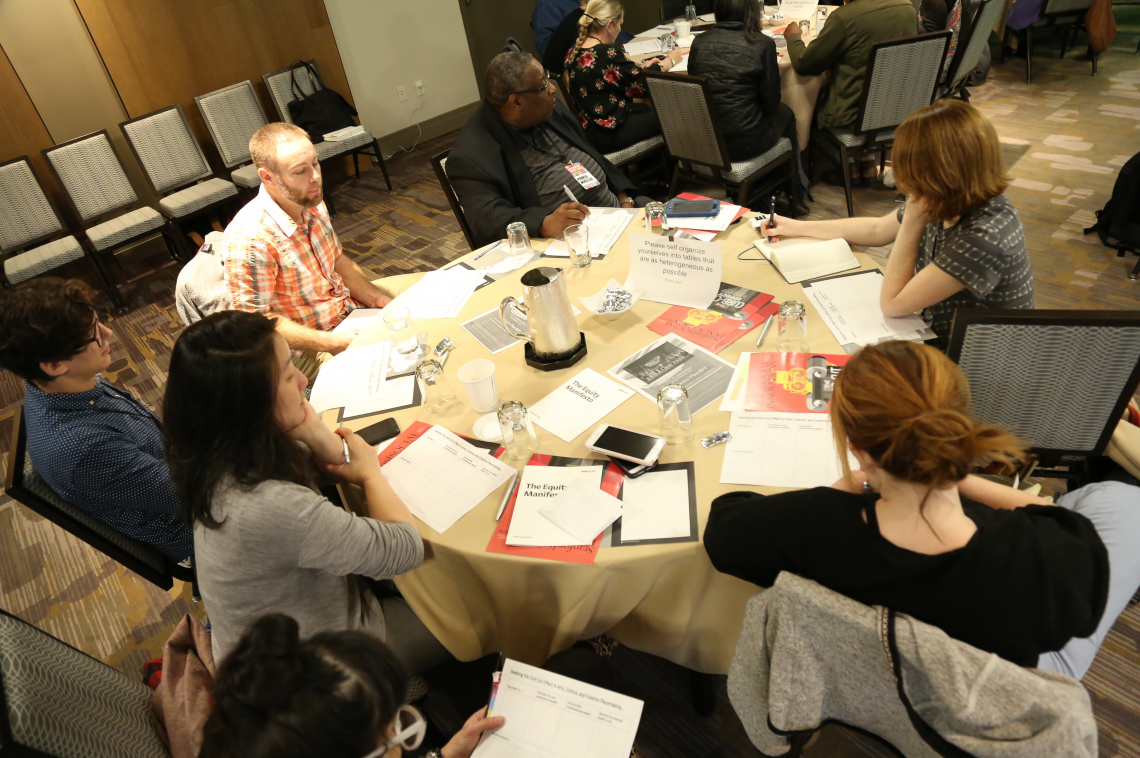


Hi there! I’m Justin, the most recent addition to the ArtPlace team.
I come to ArtPlace from the opera field and over the past few months have been immersing myself in the ideas and theories surrounding creative placemaking and its place in the artistic community. It has been an interesting journey thus far, but the recent ArtPlace Summit provided me with something of a framework for thinking about Creative Placemaking.
It was inspiring to see the various organizations engaged in community development, arts, and placemaking work gathered in one place to listen to each other and dialogue about the joys and challenges surrounding the good works being done nationally. Breakout sessions were one of the ways participants collectively discovered possible solutions to the challenges they face.
I had the good fortune to sit in on a session about engaging with individual donors and creating an organizational culture of philanthropy. Dan Hagarty of the Heard Museum was our navigator for the hour-long session on fundraising. During the session Dan, who was a one time an employee of PBS, used muppets and Sesame Street clips to convey the importance of donors as part of your community instead of treating them as apart from it.
Dan laid out ten mantras to build a culture of philanthropy in your organization:
- Insist on positivity when discussing individual donors – even the most difficult of the bunch.
- Everyone is a fundraiser - each and every staff member in an organization must understand their role in fundraising and their contribution to the work.
- You don’t have to know everything (really.)
- Never forget your sense of humor- this is assuming you had one in the first place.
- You build your base one by one.
- Don’t give up but know when to call it quits.
- Treat everyone and every gift the same.
- Tell stories as often as you tell stats. People relate to people and keep in mind that sometimes there might be someone other than you better placed to tell that story.
- Notice the haircut – or the shoes, the tie, or the button. Personal (but appropriate) interactions with individual donors allow them to remember you and know that you believe they are special.
- Go into every meeting with an idea.
Dan’s reminder about treating donors as people and not as an ATM was key. As someone who comes from opera, I know how significant the relationship to donors is to keep an organization viable. Oftentimes, ticket sales aren’t enough to float an organization from one season to the next, so donor collaboration is paramount to the long-term survival of an organization. Invite your donors into your organization and have them meet your co-workers and other employees; make them feel like part of the family and treat them as such. If your donors feel like they are a “part” of an organization and an authentic relationship is built, there is a greater chance that what you’re planning will be funded – willingly.
Finally, he talked about going into every meeting with an idea. Related to this, he talked about including donors in the discussion of future plans despite confidentiality. (which Dan exemplified by using a Star Wars metaphor, no less). The idea being that an organization must start early with getting current or potential donors involved by sharing big ideas with them a few years before those ideas come to fruition. Buy in from an early stage is something that is important and makes donors feel included. Project ideas may leak, but that is a risk that might have to be taken to secure potential funding.
One of the most important messages I gained was to just be yourself – sometimes even just your shy, introverted self – if that’s who you are. These are relationships between real people.





